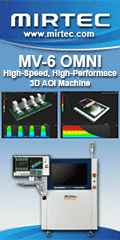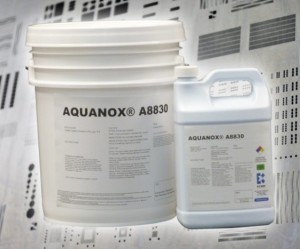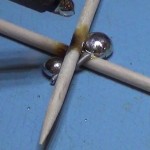Roy Akber, CEO. RUSH PCB, Inc.
Most PCB designers and fabricators worldwide follow the Gerber RS-274X as the established standard. But despite its universal popularity, Gerber has a few practical limitations that can create problems when fabricating PCBs.
A Brief History of the Gerber File Format
Gerber Systems Corporation (later acquired by Barco ETS, now Ucamco) developed the Gerber file format in the 1960s when Gerber was a leading provider of early photo-plotter systems using numerical controls. Their first format, RS-274D, was a subset of EIA RS-274-D, supporting their vector-based photo-plotters. Widely adopted, RS-247D remained the standard format for vector-based photo-plotters until the 1980s.
Raster scan plotters began replacing vector-based photo-plotters in the 1980s. These newer plotters were bitmap-based, requiring a completely different data format. Thus, in 1998, Barco ETS released a single standard image format, and named it the Extended Gerber or GerberX. This was later re-named the RS-274X format and is still in use today.
The latest Gerber RS-274X presents a complete image description format. The Extended Gerber file holds the complete description of a layer of the PCB, and provides the operator with everything needed to generate a PCB image, including the definition of any aperture shape. The RS-274X standard specifies all pads and planes clearly and simply, requiring no external aperture files, painting, or vector-fill. Its simplicity has made it the unofficial but accepted standard followed by nearly 90% of the world’s PCB designers and fabricators.
Problems with Gerber
Despite its wide acceptance and use, the RS-274X Gerber file format has its own shortcomings; for example, it does not address all aspects of fabrication and assembly as may be required by the PCB fabricator.
Although Gerber RS-274X is extremely accurate and reliable when rendering images of copper shapes precisely on signal and plane layers, it does not transfer the layer stackup order accurately. Moreover, data sets and information regarding materials, drill data, netlist, pick-and-place data, Bill of Materials (BOM), test point reports, and others need to be generated by separate processes by different utilities. Simply said, the Gerber RS-274X format is incapable of communicating the complete package of information from the design domain to the manufacturing domain.
Without a defined layer order transferred to the manufacturer, fabrication has no way of deciding the order of copper layers and may miss a layer or two altogether. With the layer order missing, the drill data may generate holes relative to an incorrect layout. This mismatch can happen with the entire assembly data, and at all aspects of the fabrication process. Usually, with Gerber RS-274X, there is no defined way a fabricator can know about missing output data, or wrong source file version, and these omissions can render boards useless.
Designers usually mitigate these shortcomings using a well-maintained design methodology and best practices shared with the fabricators. In general, they utilize Gerber RS-274X with minimum fabrication issues; however, maintaining ideal conditions all the time is difficult, mistakes or omissions can be made, causing problems for the fabricator and the assembly houses. To make matters worse, they now must shoulder the brunt of the responsibility and sort through the issue. This also forces fabricators and assembly houses to spend a great deal of time and resources inspecting and verifying the entire data for all incoming jobs, simply to minimize manufacturing issues.
Solutions and Alternatives to the Gerber File Format
 PCB manufacturers including Rush PCB Inc. can avoid and even eliminate these problems by adopting design transfer standards that address all aspects of the fabrication and assembly process. Two new open standards are available, enabling efficient and accurate data exchange from the PCB designer to the manufacturing fabricators and assemblers. Ucamco administers one of these standards, the Gerber X2, while the IPC Consortium administers the other, the IPC-2581. Both are open standards, free from any proprietary restrictions.
PCB manufacturers including Rush PCB Inc. can avoid and even eliminate these problems by adopting design transfer standards that address all aspects of the fabrication and assembly process. Two new open standards are available, enabling efficient and accurate data exchange from the PCB designer to the manufacturing fabricators and assemblers. Ucamco administers one of these standards, the Gerber X2, while the IPC Consortium administers the other, the IPC-2581. Both are open standards, free from any proprietary restrictions.
The Gerber X2 File Format
The Gerber X2 is an expanded version of the GerberX format. In addition to the layout image data, Gerber X2 now includes design data as well. The X2 fabrication files now include the board layer order and stackup information that fabricators, until X2, had to interpret and verify manually. In the same manner, a set of drill files is also included within the X2 fabrication files, detailing the location, drill size, plated/non-plated information, and the layer span.
The X2 attribute system qualifies objects with specifications including file function, part, pad function, and more. These add intelligence to the traditional image data, thus improving the automation process. For example, the file function specifies a file as top copper layer, top solder mask, while part specifies whether the PCB is a single or a panelized array, and pad function defines the pad as belonging to a via, through-hole, SMT, or fiducial. The Gerber X2 format directs all outputs to one single folder.
Since the Gerber X2 is both forward and backward compatible with the RS-274X standard, it helps any X2 reader interpret Gerber RS-274X files correctly. Therefore, fabricators using the Gerber X2 process will have no trouble interpreting legacy fabrication files created in the Gerber RS-274X format, and vice-versa.
Emergence of the IPC-2581 File Format
Contributors from a wide range of PCB industry segments initiated, developed, and drove the IPC-2581 standard. These industries included MES, CAD/CAM and PLM vendors, PCB fabricators, contract manufacturers, and OEMs. The IPC-2581 is a single data format and within a single file contains all elements of the PCB design including layer stackup, materials, assembly, and test details.
With the IPC-2581 standard, the designer can include enough layer stack details and materials information to ensure proper layer order. This standard is suitable for stackups of complex board designs such as rigid-flex boards, and is capable of handling special materials. It can also include drill and mill data for blind, buried, and filled via types. It also supports information for back drilling, V-grooves, slots, and cavities. For bare board testing, designers can include the net list as well.
In addition to complete fabrication data, IPC-2581 can also hold assembly data. This includes the pick-and-place information as well as polarity and rotation of a component, thereby enabling support for both stacked and embedded components.
IPC-2581 can also generate the documentation for BOM and purchasing, and as such, can join with PLM/ERP system data to create links between design and supply chain facilities. The greatest advantage of IPC-2581 is that it is one, single, integral file containing the entire compendium of data related to fabrication and assembly of a PCB.
ROY AKBER is chief executive officer of Rush PCB Inc., a printed circuit design, fabrication and assembly company (rushpcb.com); .
Contact the author at Rush PCB Inc.,
2149-20 O’Toole Ave.,San Jose, CA 95131, U.S.A
Tel. +408-496-6013
www.rushpcb.com
Views
Skyscraper 1





























